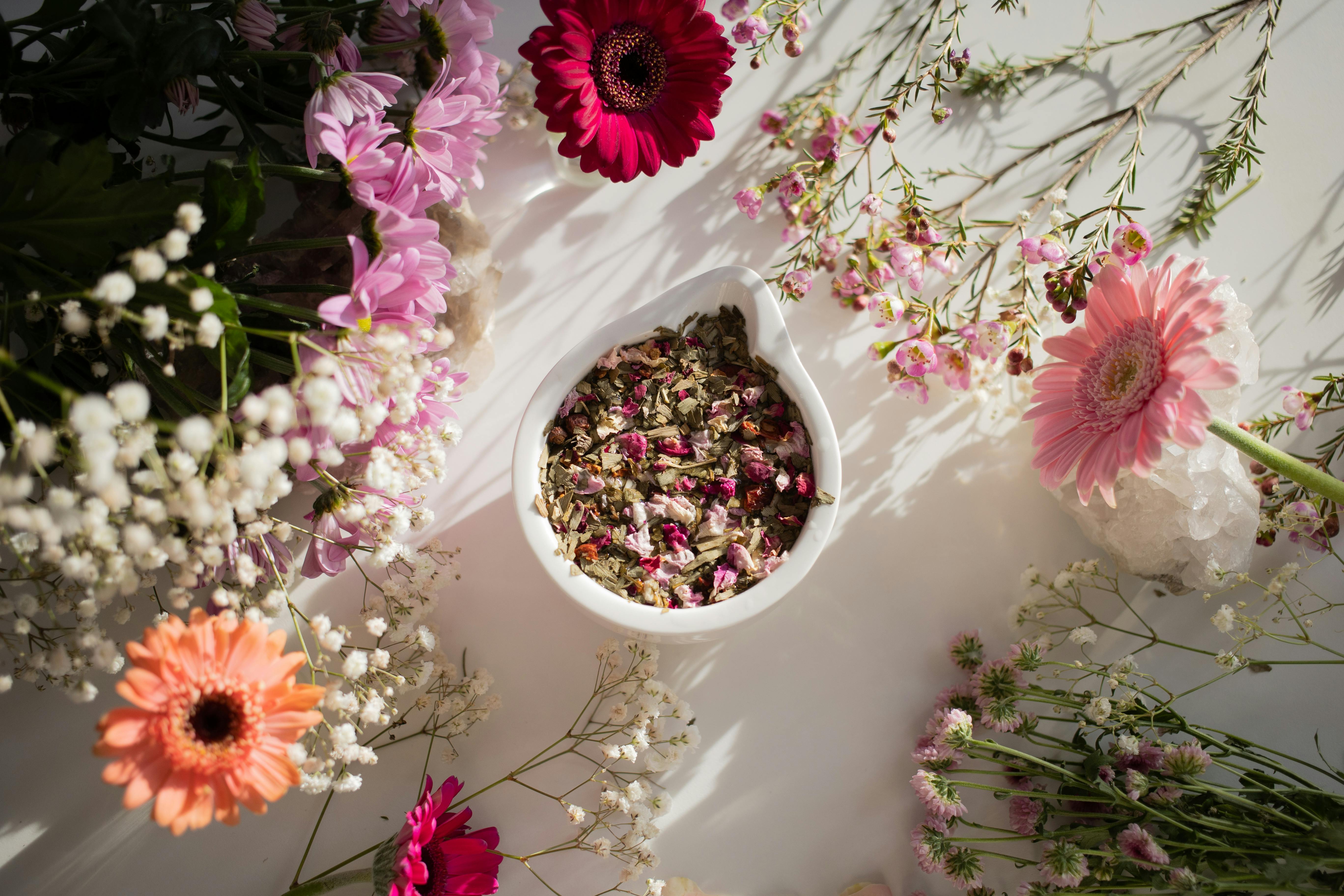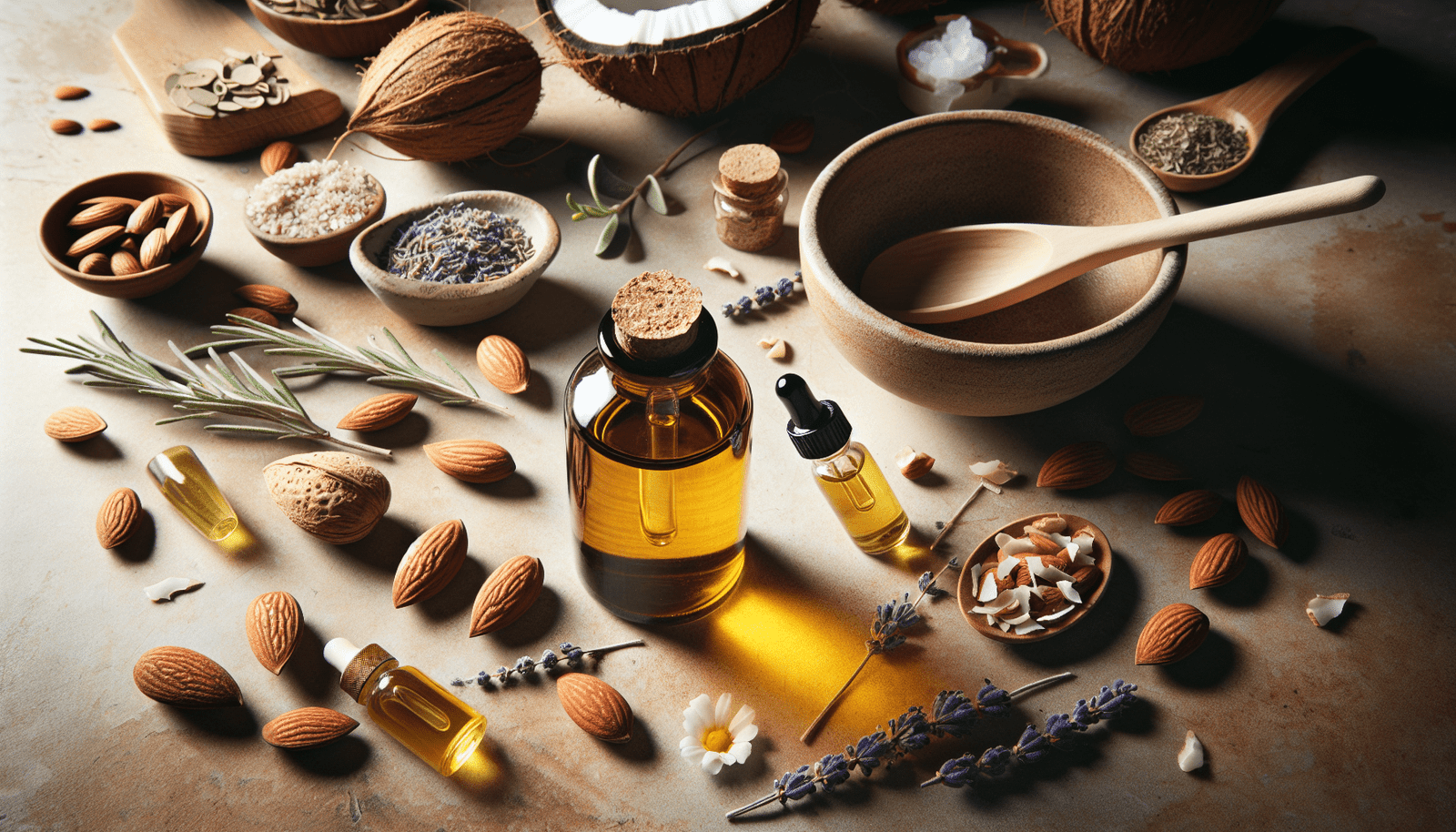You’ve probably wondered if it’s possible to create your own hair serum at home to achieve those luscious, shiny locks without breaking the bank. Well, the answer is yes! With a few simple ingredients that you may already have in your kitchen, you can whip up a DIY hair serum that will give your hair the nourishment and hydration it needs. Say goodbye to expensive store-bought products and hello to healthy, gorgeous hair with this easy and affordable solution. Let’s explore the world of homemade hair serums and discover how you can create your very own magical potion for stunning hair.
Understanding Hair Serum
What is hair serum?
Hair serum is a specialized product designed to address various hair concerns and provide added benefits. It typically comes in a liquid or oil form and is applied to the hair for various purposes, such as controlling frizz, adding shine, protecting against heat damage, and promoting overall hair health. Hair serums are often used after shampooing and conditioning the hair, as a final step in the haircare routine.
Benefits of using hair serum
Using hair serum can offer several benefits for your hair. Firstly, it helps to control frizz and flyaways, making your hair look smooth and polished. It also adds shine, giving your hair a healthy and lustrous appearance. Additionally, hair serum can provide protection against heat damage caused by styling tools such as straighteners and curling irons. Some serums also have moisturizing properties that can help to nourish and hydrate your hair, preventing dryness and brittleness.
Ingredients in commercial hair serums
Commercial hair serums often contain a combination of ingredients that work synergistically to provide the desired effects. Some common ingredients found in these products include silicone, which helps to smooth the hair and create a protective barrier, as well as various oils and botanical extracts that provide nourishment and shine. Additionally, commercial hair serums may include synthetic fragrances and preservatives to enhance the product’s scent and shelf life.
Benefits of Homemade Hair Serum
Cost-effective
One of the main advantages of making your own hair serum at home is that it can be a cost-effective alternative to commercial products. Many commercial hair serums can be quite expensive, especially those that contain high-quality ingredients or are marketed as premium products. By creating your own homemade hair serum, you have the freedom to choose affordable ingredients and can make a larger quantity for the same cost as a small bottle of store-bought serum.
Customizable ingredients
Another benefit of homemade hair serums is the ability to customize the ingredients based on your specific hair needs. Commercial products may not cater to individual hair concerns or may contain ingredients that you prefer to avoid. By making your own serum, you have the flexibility to experiment with different oils, essential oils, and other ingredients to address your unique hair requirements. This customization allows you to create a personalized hair serum that suits your hair type, texture, and desired outcomes.
Avoidance of harmful chemicals
Many commercial hair serums contain synthetic chemicals, artificial fragrances, and preservatives that can be potentially harmful to both your hair and overall health. By making your own hair serum, you have the advantage of knowing exactly what goes into the product and can avoid potentially harmful ingredients. Choosing natural and organic ingredients ensures that you are nourishing your hair with safe and beneficial components, while also minimizing your exposure to unnecessary chemicals.

Ingredients for Homemade Hair Serum
Natural oils (e.g. argan oil, jojoba oil)
Natural oils are a key component of homemade hair serums and offer numerous benefits for the hair. Argan oil, for example, is rich in vitamin E and fatty acids, which help to moisturize and nourish the hair, promoting softness and shine. Jojoba oil is another popular choice, as it closely resembles the natural oils produced by the scalp, making it well-suited for all hair types. It helps to balance the scalp’s oil production, preventing excessive dryness or oiliness.
Essential oils (e.g. lavender oil, rosemary oil)
Essential oils not only provide a pleasant scent but also offer additional benefits for the hair. Lavender oil, for instance, has soothing properties that can help to calm an itchy or irritated scalp. Rosemary oil is known for its ability to stimulate hair growth and improve circulation to the scalp. Other essential oils, such as peppermint, tea tree, and ylang-ylang, can also be added to homemade hair serums for their unique properties and aromatherapy benefits.
Vitamin E oil
Vitamin E oil is a common ingredient in homemade hair serums due to its antioxidant properties. It helps to protect the hair from environmental damage and oxidative stress, which can lead to hair breakage and loss. Additionally, vitamin E oil promotes cell regeneration and improves the overall health of the scalp, which is essential for healthy hair growth. By adding a few drops of vitamin E oil to your homemade serum, you can enhance its nourishing and protective effects.
Choosing the Right Ingredients
Consider your hair type
When selecting ingredients for your homemade hair serum, it is important to consider your hair type. Different hair types have varying needs and requirements. For example, if you have dry or damaged hair, you may want to focus on moisturizing and nourishing ingredients such as argan oil. If you have oily hair, lighter oils like jojoba oil may be more suitable. By understanding your hair type, you can choose ingredients that will address your specific concerns and provide optimal results.
Research ingredients for specific hair concerns
In addition to considering your hair type, it is also helpful to research specific ingredients that target your hair concerns. For example, if you are looking to promote hair growth, you may want to include essential oils like rosemary or cedarwood, which have been shown to have stimulating effects on hair follicles. If you struggle with dandruff or an itchy scalp, tea tree oil can help to calm inflammation and reduce flakiness. By researching and selecting ingredients based on your specific hair concerns, you can create a more targeted and effective homemade hair serum.
Patch test for allergies
Before applying any homemade hair serum to your entire head of hair, it is important to perform a patch test to check for potential allergies or sensitivities. Apply a small amount of the serum to a discreet area of your skin, such as the inner wrist or behind the ear, and leave it for 24 hours. If you experience any redness, itching, or irritation, it is advisable to avoid using the serum on your hair. Patch testing ensures that you can identify any adverse reactions before applying the serum to your entire scalp or hair.

Recipes for Homemade Hair Serum
Basic hair serum recipe
Ingredients:
- 2 tablespoons of natural oil (e.g., argan oil, jojoba oil)
- 5-10 drops of essential oil (e.g., lavender oil, rosemary oil)
- 3-5 drops of vitamin E oil
Instructions:
- In a small bowl, mix together the natural oil, essential oil, and vitamin E oil until well combined.
- Adjust the number of essential oil drops based on your preferred scent strength.
- Transfer the mixture to a clean and suitable container, such as a dropper bottle or a small glass bottle with a pump.
- To use, apply a small amount of the homemade hair serum to the palm of your hand and distribute evenly through damp or dry hair, focusing on the mid-lengths and ends.
Hair growth stimulating serum
Ingredients:
- 2 tablespoons of castor oil
- 1 tablespoon of argan oil
- 5-10 drops of rosemary essential oil
Instructions:
- In a small bowl, combine the castor oil, argan oil, and rosemary essential oil.
- Stir well to ensure the ingredients are thoroughly mixed.
- Transfer the serum into a dropper bottle or a glass bottle with a sealable cap.
- Apply the serum to the scalp by parting the hair into sections and gently massaging the serum into the roots.
- Leave the serum on for at least 30 minutes or overnight before shampooing your hair as usual.
- Repeat this process 2-3 times a week to stimulate hair growth and improve scalp health.
Hydrating and nourishing serum
Ingredients:
- 2 tablespoons of coconut oil
- 1 tablespoon of sweet almond oil
- 5 drops of lavender essential oil
- 5 drops of ylang-ylang essential oil
Instructions:
- In a heat-safe container, melt the coconut oil using a double boiler or microwave in short intervals until liquid.
- Stir in the sweet almond oil, lavender essential oil, and ylang-ylang essential oil.
- Once the ingredients are well mixed, transfer the serum to a glass jar or bottle with a sealable lid.
- Allow the serum to cool and solidify before use.
- Take a small amount of the serum and warm it between your palms.
- Apply the serum to the mid-lengths and ends of your hair, focusing on dry or damaged areas.
- Leave the serum on for at least 1-2 hours or overnight for a more intensive treatment.
- Rinse out the serum with shampoo and conditioner as usual.
Step-by-Step Guide to Making Homemade Hair Serum
Gather the ingredients and tools
Before starting the process of making your homemade hair serum, gather all the necessary ingredients and tools. This includes natural oils, essential oils, vitamin E oil, a small mixing bowl, a spoon or stirring utensil, and a clean container to store the finished serum. Having everything prepared and within reach will make the process more efficient and enjoyable.
Measure and mix the ingredients
In a small bowl, measure out the desired quantities of natural oils, essential oils, and vitamin E oil according to the selected recipe or your own preferences. Stir the ingredients together using a spoon or stirring utensil until they are well combined. This mixing step ensures that all the oils blend together and distribute evenly throughout the hair serum.
Transfer to a suitable container
Once the ingredients are thoroughly mixed, transfer the homemade hair serum to a clean and suitable container. This could be a dropper bottle, a small glass bottle with a pump, or any other container that allows for easy application and storage. Make sure the container is clean and dry to prevent contamination. As you transfer the serum, be careful not to spill or waste any of the mixture.

Tips for Using Homemade Hair Serum
Apply sparingly to avoid greasiness
When using homemade hair serum, it is important to apply it sparingly to avoid weighing down the hair or making it greasy. Start with a small amount and gradually add more if needed. Remember, it is easier to add additional serum than it is to remove excess product. By applying a small quantity at first, you can assess how much your hair needs and adjust accordingly.
Focus on the mid-lengths and ends of hair
When applying hair serum, focus primarily on the mid-lengths and ends of your hair. These areas tend to be more prone to dryness and damage, and can benefit the most from the moisturizing and nourishing effects of the serum. Avoid applying the serum directly to the roots to prevent the hair from becoming greasy or weighed down.
Adjust the amount based on hair length and thickness
The amount of hair serum you use should depend on the length and thickness of your hair. If you have shorter or finer hair, you will likely require less serum compared to someone with longer or thicker hair. Experiment with different quantities to find the optimal amount for your specific hair type. Start with a small amount and gradually increase if necessary.
Storage and Shelf Life
Proper storage containers
To maintain the freshness and efficacy of your homemade hair serum, it is important to store it in a suitable container. Choose containers that are made of glass or sturdy plastic, as these materials are less likely to react with the oils or degrade over time. Ensure that the container has a tight, sealable lid to prevent air and moisture from entering. This will help to extend the shelf life of your homemade hair serum.
Refrigeration for longer shelf life
Homemade hair serums generally have a shorter shelf life compared to commercial products due to the absence of preservatives. To prolong the shelf life of your homemade serum, consider storing it in the refrigerator. The cooler temperature helps to slow down the oxidation process and prevent the growth of bacteria or mold. However, if you prefer applying the serum at room temperature, ensure that it is used within the recommended storage period.
Use within a certain period
While homemade hair serums can be effective and beneficial, it is important to note that they have a limited shelf life compared to commercial products. Due to the absence of preservatives, natural oils and essential oils can eventually go rancid or lose their potency. It is generally recommended to use homemade hair serums within 2-3 months from the date of preparation to ensure their freshness and effectiveness.
Precautions and Considerations
Perform patch tests for allergies
Before using any homemade hair serum on your entire head of hair, it is crucial to perform a patch test to check for allergies or sensitivities. Apply a small amount of the serum to a discreet area of your skin, such as the inner wrist or behind the ear, and leave it for 24 hours. If you experience any redness, itching, or irritation, it is advisable to avoid using the serum on your hair. Patch testing helps to identify any potential allergies before applying the serum to a larger area.
Avoid using expired ingredients
When making homemade hair serum, always ensure that the ingredients you are using are fresh and within their expiry dates. Expired oils or essential oils may have degraded in quality and can potentially cause adverse reactions or be less effective. Check the expiration dates of your ingredients before preparing the serum, and discard any expired or rancid oils to maintain the safety and efficacy of your homemade hair serum.
Consult a dermatologist if experiencing adverse reactions
If you experience any adverse reactions or persistent scalp or hair problems after using a homemade hair serum, it is advisable to consult a dermatologist or healthcare professional. They can provide expert advice and guidance based on your specific condition and identify any underlying issues that may require further treatment. It is always better to seek professional help if you have any concerns about your hair health or any unexpected reactions to a product.
Conclusion
Creating a homemade hair serum is not only possible but also highly beneficial. The ability to customize the ingredients based on your hair type and concerns allows for a more personalized and effective haircare experience. By using natural oils, essential oils, and vitamin E oil, you can create a cost-effective and chemical-free alternative to commercial hair serums. Remember to choose ingredients that suit your hair type, perform patch tests for allergies, and store the serum properly for optimal freshness. With homemade hair serum, you can take care of your hair with natural and nourishing alternatives. So, go ahead and experiment with different recipes and ingredients to find the perfect homemade hair serum for your beautiful locks.

Irina Coz, a passionate advocate for inclusive beauty, founded this celebrated blog to honor every skin tone. With a background in dermatology and cultural studies, Coz expertly blends scientific insight with a deep understanding of diverse beauty traditions, creating a space where every race’s beauty is acknowledged and celebrated.

